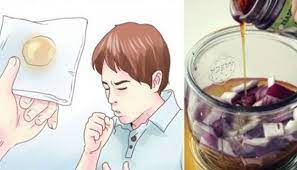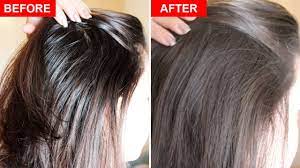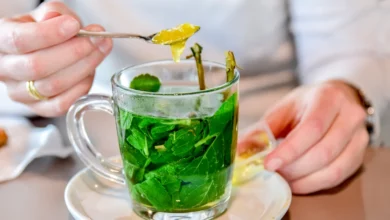During puberty, youngsters experience a sudden growth spurt and might rapidly gain or lose weight. This sudden stretching and contracting of the skin lead to stretch marks on hips, thighs and breasts.
3. Weight gain
Stretch marks occur due to weight gain in a short period of time as the skin stretches suddenly. Similarly, they also appear if you are on a diet, due to the fluctuating weight. It is therefore advisable to lose weight gradually so that the skin is not strained.
4. Corticosteroids
Corticosteroid creams, lotions and pills used to treat certain skin diseases can also cause stretch marks as they bring down the collagen levels in your skin. This decreases the skin’s ability to stretch and makes you prone to developing stretch marks.
5. Genetics
If your parents have had stretch marks, then you are most likely to have them too.
6. Health conditions
Rare health conditions such as Cushing’s syndrome, Marfan’s syndrome, Ehlers-Danlos and other adrenal gland disorders cause stretch marks due to various reasons. In Cushing’s syndrome, the body tends to overproduce the hormone cortisol, which causes these marks. Meanwhile, Marfan syndrome is the result of a faulty gene that makes the body’s skin and connective tissues weak, reducing their elasticity, thus increasing the chances of developing stretch marks.
7. Body Building
Bodybuilders very commonly face this problem of stretch marks. Rapid growth in muscle mass and sometimes misuse of anabolic steroids to accelerate the growth of muscle lead to the appearance of stretch marks.
Types of stretch marks
1. Red stretch marks
Also known as striae rubra, these stretch marks are fresh and appear reddish or purplish at the initial stage. They are formed when the dermal layer of the skin is stretched, letting the blood vessels show. At this stage, you may experience a lot of itching around these stretch marks. It is easier to get rid of red stretch marks faster because they are new.
2. White stretch marks
Also known as striae alba, these are the most stubborn and appear white or silverish in colour. The tiny tears on the skin occur when the blood vessels reduce in size, thus making the fat under the skin visible. Since the white stretch marks are mature, it might take longer treat it.
Dr Chopra explains, “Even though our skin is elastic, overstretching leads to disruption of collagen (which makes up most of the connective tissue) resulting in stretch marks. They are initially pinkish/ red in colour. At this stage, the use of topical creams containing Tretinoin may be useful. Once the stretch marks turn white, the use of vitamin E creams can help to some extent. Stretch marks never completely disappear, but fade with effective natural remedies. However, consult your dermatologist at the earliest for effective treatment.”
Home remedies to treat stretch marks
1. Argan oil
Vitamin E enriched Argan oil increases the elasticity of the skin and rubbing it on the stretch marks might heal the broken tissues gradually making the marks fade.
2. Lemon juice
Lemon juice is known for its natural bleaching properties, so it helps reduce the visibility effectively. Use fresh lemon juice daily or simply rub a sliced lemon wedge on your marks to see results.
3. Egg white
High in proteins and amino acids, egg white is a superfood for the skin. When applied on stretch marks, the egg white will help lighten the marks while also tightening the skin.
4. Potato juice
Potatoes contain starch and other skin lighting enzymes which is why they are often used to lighten dark circles, spots and blemishes from the skin. It bleaches the skin and effectively reduces the visibility of stretch marks when applied regularly.
5. Olive oil
Rich in moisturising properties, olive oil is full of antioxidants and other nutrients that are exceptionally good for repairing skin damage. Application of cold-pressed olive oil on stretch marks will help them fade over time.
6. Sugar
Mix sugar, olive oil, and lemon juice and mix to form a scrub. Apply it to the stretch marks and rub it in for 10 minutes. Rinse with lukewarm water.
7. Castor oil
Apply castor oil directly on the stretch marks and massage it in a circular motion for 15-20 minutes. After massaging, cover the area with a thin cotton cloth and apply some heat using a heating pad. For best results, do this as often as you can for a month.
8. Aloe vera gel
Remove the outer layer of the aloe vera leaf and take out the sticky gel from the inside of the leaf. Use this aloe vera gel on stretch marks and wash off with water after 2-3 hours.
9. Apricots
Grind 2-3 apricots after removing their seeds to form a smooth paste. Apply the paste directly on the stretch marks. Leave it for 20 minutes. Then, rinse it with lukewarm water.
10. Black tea
Black tea contains lots of vitamins and minerals, including Vitamin B12, which helps to control skin pigmentation. To use black tea for stretch marks, boil a couple of tablespoons of black tea and add some salt to it. After cooling, apply the mixture to the marks and repeat the process until they disappear.
Dietary Remedies
1. Water
Drinking 8-10 glasses of water daily is very good for the skin. It helps to restore its elasticity, keeping it supple and soft. This helps to reduce the stretch marks.
2. Vitamin C
Foods like berries, raw cabbage, citrus fruits, kiwi fruit, melons, peas, peppers, broccoli, pineapple, spinach, tomatoes and turnips provide the recommended daily allowance of Vitamin C. It is antioxidant that helps our bodies to fight the toxins or free radicals. With adequate Vitamin C intake, the skin scars heal faster.
3. Vitamin E
Vitamin E is also an antioxidant that fights free radicals while deeply nourishing the skin. Foods like almonds, raw seeds like pumpkin and sesame, Swiss chards, hazelnuts, pine nuts, spinach, avocado, broccoli, parsley, papaya and olives are rich sources of Vitamin E. Daily consumption of these foods will help to get rid of stretch marks.
4. Gelatin
Gelatin contains collagen which is also present in your skin and is responsible for providing elasticity to your skin. Bone broth (chicken, lamb or beef) is an excellent natural source of gelatine in your diet.
5. Omega-3 Fatty Acids
Omega-3 fatty acids also help increase elasticity in the skin. Foods like flaxseed, chia seeds, salmon, sardines, cod liver, walnuts, soybean, beef, tofu, shrimps and cauliflower can go a long way in keeping the stretch marks at bay.
FAQs on Stretch Marks
Q. What causes stretch marks on hips?
A. Stretch marks on the hips usually occur when the dermal layer of the skin gets stretched, maybe due to puberty, sudden weight gain or loss, muscle building or during pregnancy. Additionally, genes too, play a major role in the development of stretch marks, meaning if someone in your family has a history of stretch marks, then you are most likely to develop it too. The dermis has strong, inter-connected fibers that let your skin stretch as your body grows. When the dermis tears, the blood vessels under the skin start to show, making the stretch marks appear red or purple initially. Later, when the blood vessels get smaller, the pale-coloured fat under your skin becomes visible; and the marks turn silvery white in colour.
Q. How can I avoid getting stretch marks?
A. Drinking 8 to 10 glasses of water daily helps restore the skin’s elasticity, keeping it supple and soft, thereby helping prevent stretch marks. Apart from drinking water, make sure you to moisturise and exfoliate your skin from time to time. You can also include vitamin c- rich foods such as berries, raw cabbage, citrus fruits, kiwi fruit, melons, peas, peppers, broccoli, pineapple, spinach, tomatoes and turnips in your daily diet to fight off toxins and free radicals. Additionally, flax seeds, chia seeds, salmon, sardines, cod liver, walnuts, soybean, beef, tofu, shrimps and cauliflower, all rich in omega-3 fatty acids, too can help keep stretch marks at bay.
Q. How long does it take to remove stretch marks?
A. While you can’t permanently get rid of stretch marks, the good news is that they usually fade with time. Within 6 to 12 months, these marks tend to become less visible if you’ve been taking good care of your skin and health. Massaging the affected areas with vitamin E enriched argan oil helps increases the elasticity of the skin, helping heal the broken tissues gradually making the marks fade. Lemon juice is known for its natural bleaching properties, so it too can help reduce the visibility effectively. Potato juice contains starch and other skin lighting enzymes which too help bleach the skin and can thus help reduce the visibility of stretch marks when applied regularly. Besides, aloe vera gel, apricots, black tea and castor oil too can help quicken the process.
Q. How safe is laser stretch mark removal treatment?
A. While natural remedies could help get rid of stretch marks, you can even consider medical or surgical options for them. The Pulsed Dye Laser, also known as vascular laser, is considered to be the most effective against fresh and early stretch marks that are still red or purple in colour. However, this treatment is less effective if you have darker skin. On the other hand, Fractional Laser Treatment is effective in case of old stretch marks. Microdermabrasion, often used as a treatment for acne, can help in reducing the appearance of stretch marks. However, this option may cause irritation to the skin. Besides, Abdominoplasty can help get rid of stretch marks permanently, it is quite expensive and comes with risks. It’s best to consult a doctor before giving any of these treatments a go.
Q. Is petroleum jelly good for stretch marks?
A. Petroleum jelly helps moisturise the skin helping maintain its elasticity. In addition, to be gentle on the skin, it also helps lock in moisture which in turn can help keep the skin soft and supple. Daily massaging the affected areas with creams or lotions containing petroleum jelly helps promote new tissue growth and break down the bands of collagen that are responsible for stretch marks.




